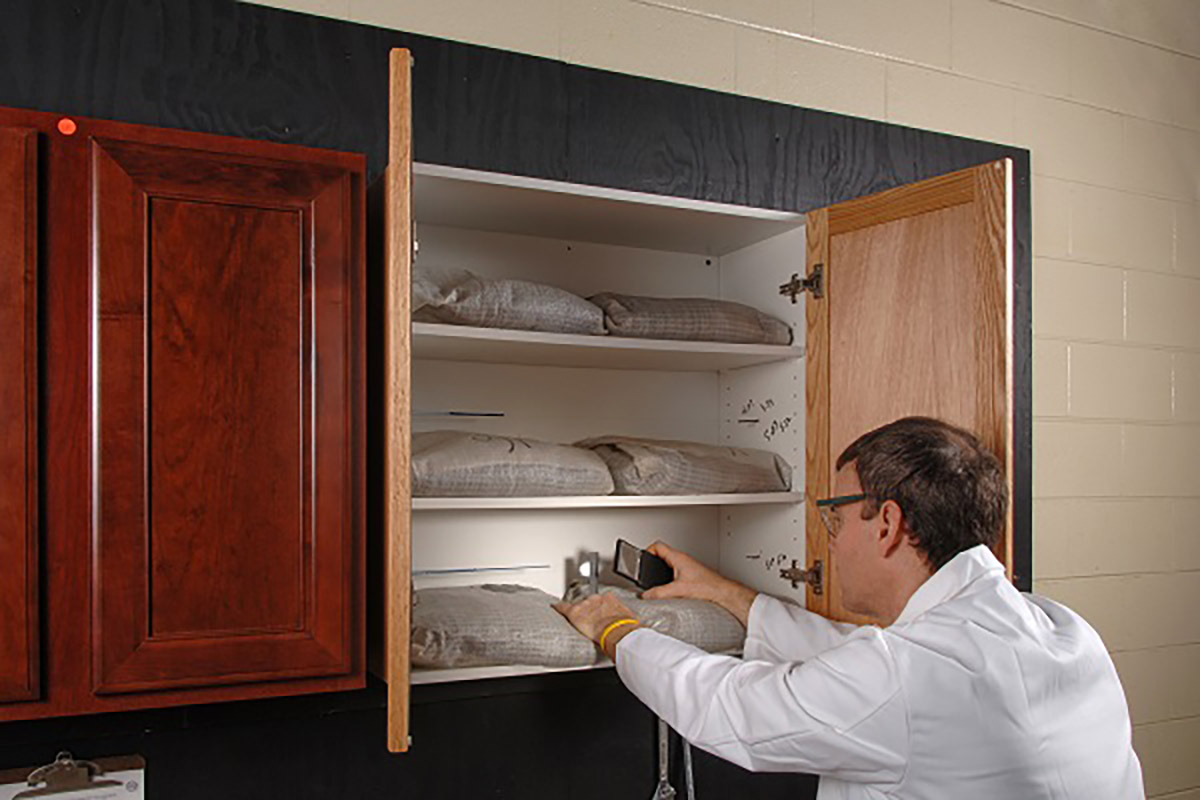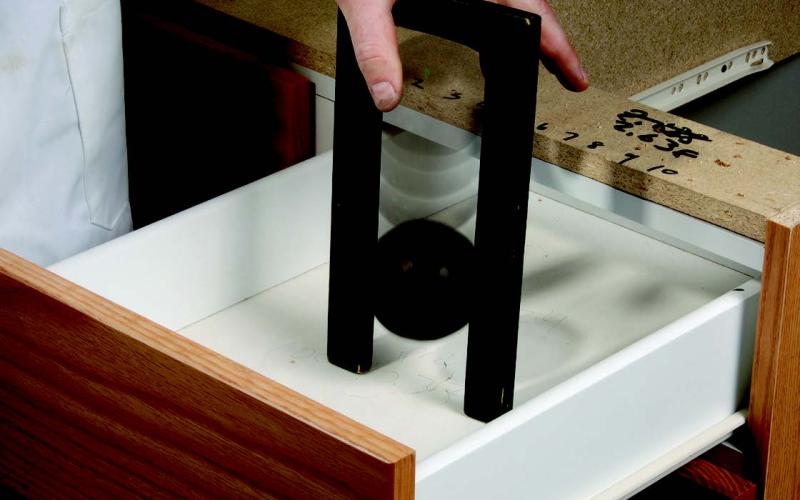Peace of mind that your cabinetry is tested and trustworthy.
Cabinets undergo extensive testing to achieve the KCMA A161.1 Quality Certification Seal, proving that they are worth choosing for every home.

What do we test?
Structural
These tests are meant to verify the structural integrity and strength of cabinets
Drawer
Drawers and drawer mechanisms to operate with loading during normal use
Door Operation
Test the ability of doors, hinges and means of attachment to withstand a daily use.
Finish
These tests create, in accelerated form, the cumulative effects of years of normal kitchen conditions of pre-finished cabinets.
Structural

Shelves and bottoms
All shelves and bottoms are loaded at 15 pounds per square foot. Loading is maintained for seven days to ensure that there is no excessive deflection and no visible sing of join separation or failure of any part of the cabinets or the mounting system.
Wall Mounted Cabinets
Mounted wall cabinets and wall hung base cabinets are gradually loaded to 600 pounds without any visible sign of failure in the cabinet or the mounting system.
Base Joints
To test the strength of base-front joints, a load of 250 pounds is applied against the inside of cabinet-front stiles for cabinet with drawer rails, or 200 pounds is applied for cabinets without drawer rails, to ensure reliable front joints that will not open during stress in service or during installation.
Drawer Tests
Weight Test
To test the ability of drawers and drawer mechanisms to operate with loading during normal use, drawers are loaded at 15 pounds per square foot and operated through 25,000 cycles. The drawers must then remain operable with no failure in any part of the drawer assembly or operating system, and drawer bottoms must not be deflected to interfere with drawer operation.
Structural Strength
To test the ability of the drawer-front assembly to withstand the impact of closing the drawer under normal use, a three-pound weight is dropped 8 inches against the drawer assembly. After 10 drops, there must be no evidence of looseness or structural damage to the drawer-front assembly that impairs operation.
Door Tests

Stress Test
Doors are opened and closed through a full 90-degree swing for 25,000 cycles. At the test's conclusion, the door must be operable, the door-holding device must hold the door in the closed position, hinges must show no visible signs of damage, connections between cabinet-and-hinge and door-and-hinge must show no sign of looseness.
Load Test
65 pounds of weight is applied on the door. The weighted door is slowly operated for 10 cycles from 90 degrees open to 20 degrees open and returned to the 90-degree position. The door must remain weighted for 10 minutes, after which the door and hinges must show no visible signs of damage or looseness
Finish Tests

Heat Test
A cabinet door is placed in a hotbox at 120 degrees Fahrenheit and 70 percent relative humidity for 24 hours.
Cold Test
A cabinet door is placed in a hotbox at 120 degrees Fahrenheit and 70 percent relative humidity for one hour, removed and allowed to return to room temperature and humidity conditions, and then placed in a coldbox for one hour at -5 degrees Fahrenheit.
Spill Test
Exterior exposed surfaces of doors, front frames, drawer fronts and end panels are subjected to vinegar, lemon, orange and grape juices, tomato ketchup, coffee, olive oil and 100-proof alcohol for 24 hours and to mustard for one hour.
Stain Test
A cabinet door edge is subjected to exposure to a standardized detergent formula for 4-24 hours depending on door type.
